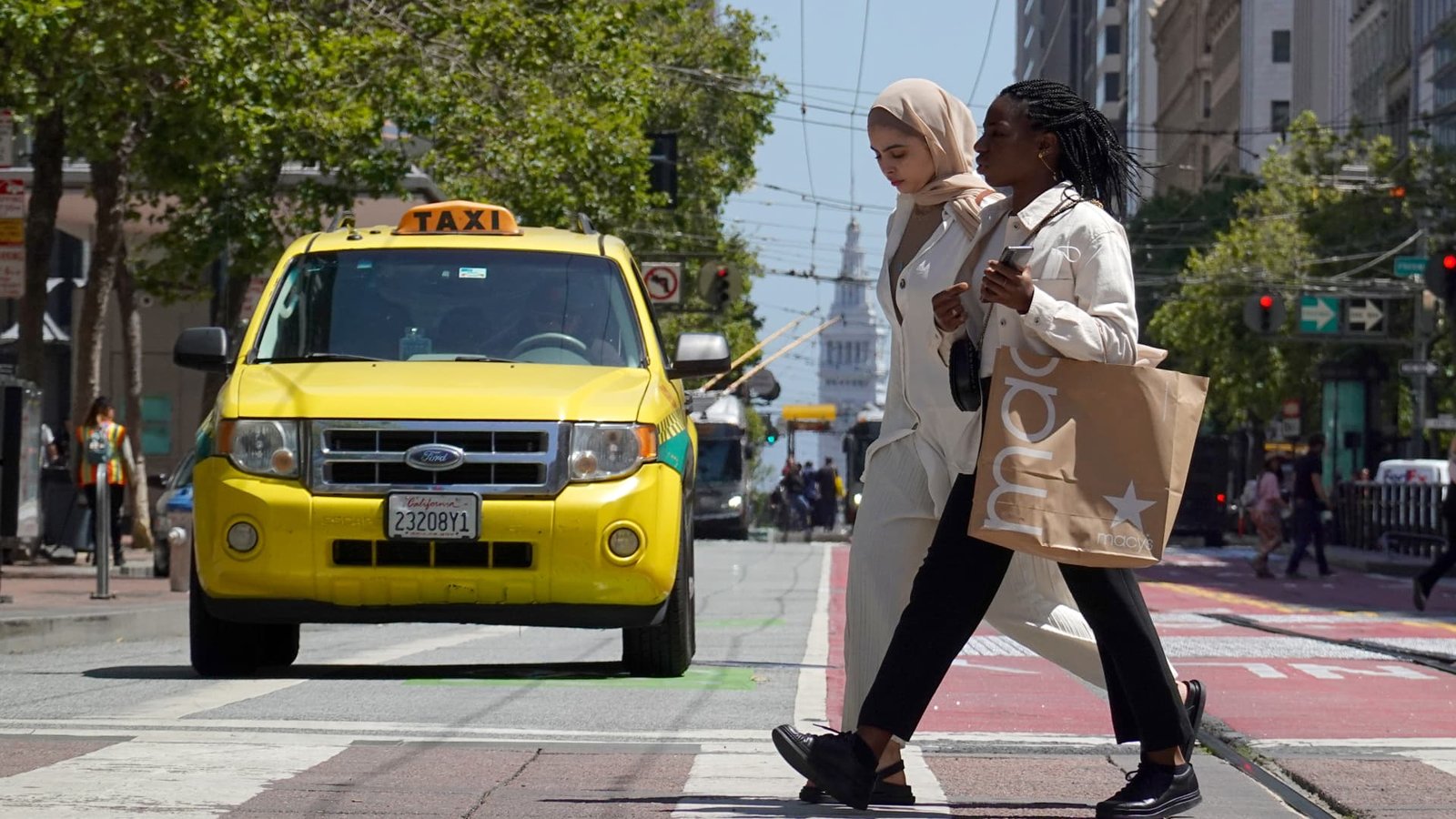
A pedestrian carries a shopping bagwhile walking through Union Square on May 17, 2022 in San Francisco, California.
Justin Sullivan | Getty Images
The Biden administration plans to require that all new cars and trucks come with pedestrian-collision avoidance systems that include automatic emergency braking technology by the end of the decade.
In an interview, Transportation Secretary Pete Buttigieg said the requirement is designed to reduce pedestrian deaths, which have been on the rise in the post-Covid 19 era.
“So many Americans [are] losing their lives on our roadways,” Buttigieg said. “We think we really have a responsibility to get this technology to be standard across the U.S. fleet.”
The new standards will require all cars to avoid contact at up to 62 mph and mandate that they must be able to detect pedestrians in the dark. They will also require braking at up to 45 mph when a pedestrian is detected.
The Transportation Department projects the rule could save 360 lives a year and prevent 24,000 injuries.
Automatic emergency braking “prevents collisions. And collisions kill people — it’s that simple,” Buttigieg said.
In a statement, the Alliance for Automotive Innovation, an industry trade group representing auto manufacturers, said it hadn’t seen the new rule, so it couldn’t comment directly.
It said that technologies like automatic emergency braking have proven “game changing” and that automakers have voluntarily committed to install them on new vehicles.
According to the Governors Highway Safety Association, drivers killed more than 7,500 pedestrians in 2022, the most since 1981 — with total deaths having about doubled over the past decade.
The pedestrian fatality rate, at 2.2 per billion vehicle miles traveled, is also higher than pre-pandemic levels, though it began to decline in the first half of 2023.
Research has shown that since the coronavirus pandemic, speeding and other risky driving behaviors have increased, while public transit ridership has declined, causing an increase in road deaths.
In addition, the pandemic delayed sales of newer vehicles, which tend to be safer and feature the latest accident-prevention technologies.
At the same time, more consumers are buying light trucks, including SUVs, which tend to be less safe.
Consumers have somewhat proven resistant to the proposed required technology, according to J.D. Power survey data.
“Drivers have reported a lot of issues with it activating when it shouldn’t,” said Kathleen Rizk, J.D. Power’s senior director for user experience benchmarking and technology. They also find that it’s too sensitive or that it doesn’t react the same way they would, she said.
“The perception is they’re losing control,” Rizk said, referring to the technological interventions built into modern passenger vehicles.
Buttigieg acknowledged the technology is still being perfected — one reason the requirement won’t take effect until the end of 2029.
“We’re allowing a few years for this technology to be refined,” he said, adding that hiccups in some examples of the safety features can be unhelpful.
“We need to make sure that these technologies are refined and developed,” he said.
Buttigieg estimated the requirement will add $82 to the cost of a new vehicle, a price well worth the lives saved, he said.
“If there’s a technology that is this lifesaving … we don’t want [it] to be only available to those who can afford it as a bell and whistle,” he said. “We want to make sure every car rolling off the line has this capability.”






